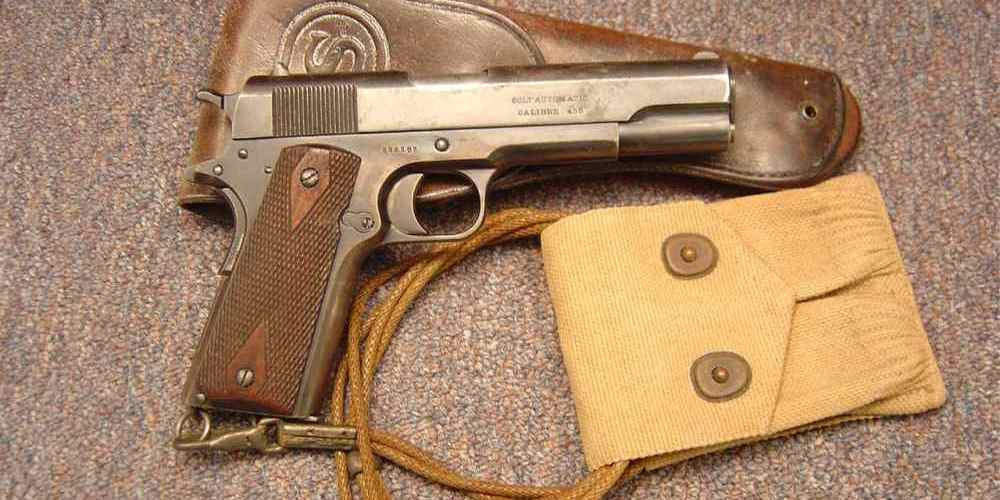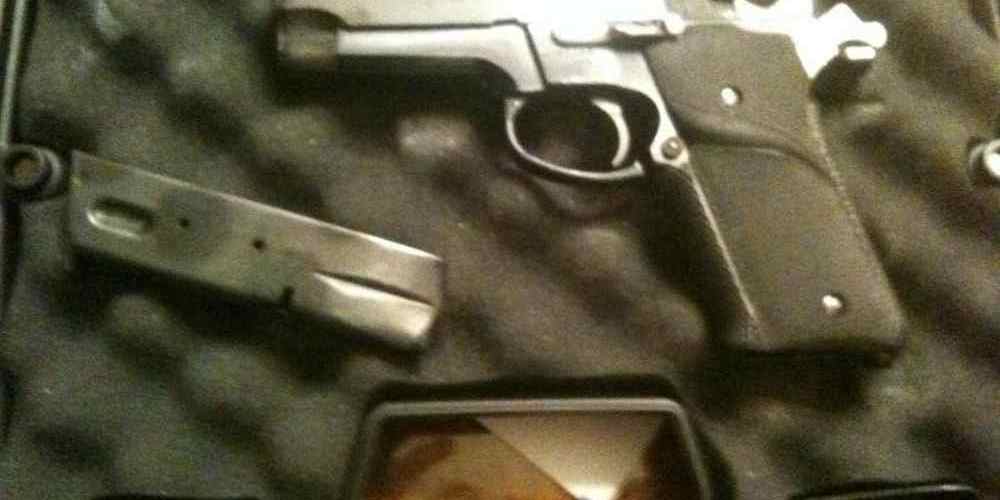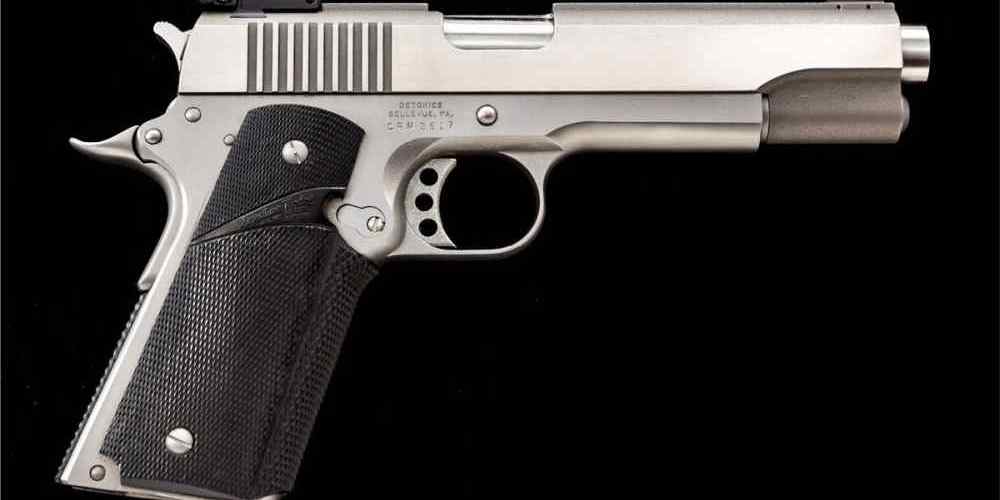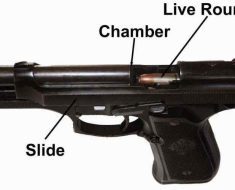“Keep your semi-auto pistol in top condition with Spring into Action.”
Importance of Regular Maintenance for Pistol Springs
Spring into Action: Maintaining Springs in Semi-Auto Pistols
When it comes to owning a semi-automatic pistol, regular maintenance is key to ensuring its longevity and reliability. One crucial aspect of maintenance that often gets overlooked is the care and maintenance of the pistol’s springs. Springs play a vital role in the functioning of a semi-auto pistol, and neglecting them can lead to malfunctions and potentially dangerous situations. In this article, we will discuss the importance of regular maintenance for pistol springs and provide some tips on how to keep them in top condition. First and foremost, it is essential to understand the role that springs play in a semi-automatic pistol. Springs are responsible for various functions within the pistol, such as feeding ammunition into the chamber, ejecting spent casings, and returning the slide to its forward position after firing. Without properly functioning springs, the pistol will not cycle correctly, leading to misfires, jams, and other malfunctions. To ensure that your pistol’s springs are in good working condition, it is crucial to inspect them regularly for signs of wear and tear. Over time, springs can become weakened or stretched, which can affect their performance. Look for any signs of rust, corrosion, or deformation, as these are indicators that the springs may need to be replaced. Additionally, pay attention to how the pistol is functioning – if you notice any issues with cycling or feeding, it may be a sign that the springs need attention. One of the best ways to maintain pistol springs is to clean and lubricate them regularly. Dirt, debris, and grime can build up on the springs over time, causing them to become less effective. Use a soft brush or cloth to remove any dirt or residue from the springs, and then apply a small amount of gun oil or lubricant to keep them running smoothly. Be sure to wipe off any excess oil to prevent it from attracting more dirt. In addition to cleaning and lubricating the springs, it is also essential to replace them periodically. While springs are designed to last for thousands of rounds, they will eventually wear out and lose their elasticity. As a general rule of thumb, it is recommended to replace pistol springs every 5,000 to 10,000 rounds, depending on the manufacturer’s recommendations. By replacing worn-out springs, you can ensure that your pistol continues to function reliably and safely. When replacing pistol springs, be sure to use high-quality replacement parts from a reputable manufacturer. Cheap or inferior springs can lead to malfunctions and potentially dangerous situations. It is always best to invest in quality parts to ensure the safety and reliability of your pistol. In conclusion, maintaining pistol springs is a crucial aspect of regular maintenance for semi-automatic pistols. By inspecting, cleaning, lubricating, and replacing the springs as needed, you can ensure that your pistol functions reliably and safely. Remember to pay attention to how your pistol is cycling and feeding, as these can be indicators that the springs need attention. With proper care and maintenance, your pistol’s springs will continue to serve you well for years to come. So, spring into action and give your pistol the care it deserves.
Signs of Wear and Tear on Pistol Springs
Spring into Action: Maintaining Springs in semi-auto Pistols
As a responsible gun owner, it is crucial to ensure that your firearms are properly maintained to ensure their safety and functionality. One of the key components of a semi-automatic pistol that often gets overlooked is the springs. Springs play a vital role in the operation of a pistol, and neglecting them can lead to malfunctions and potentially dangerous situations. In this article, we will discuss the signs of wear and tear on pistol springs and how to properly maintain them to keep your firearm in top condition. One of the most common signs of wear on pistol springs is a decrease in tension. Over time, the constant compression and decompression of the spring can cause it to lose its elasticity, resulting in a weaker spring that may not be able to properly cycle the slide or reset the trigger. This can lead to failures to feed, extract, or eject, as well as light primer strikes and other malfunctions that can affect the reliability of your pistol. Another sign of wear on pistol springs is rust or corrosion. If your pistol is exposed to moisture or humidity, the springs can rust over time, which can cause them to bind or break. Rust can also weaken the metal of the spring, making it more prone to failure. It is important to regularly inspect your pistol springs for any signs of rust or corrosion and replace them if necessary to prevent malfunctions. In addition to physical signs of wear, it is also important to pay attention to the round count on your pistol. The more rounds you fire through your pistol, the more wear and tear it will experience, including on the springs. Most manufacturers recommend replacing pistol springs every 5,000 to 10,000 rounds, depending on the specific model and caliber of the pistol. Keeping track of your round count and replacing your springs regularly can help prevent malfunctions and ensure the reliability of your firearm. To properly maintain your pistol springs, it is important to clean and lubricate them regularly. Dirt, debris, and fouling can build up on the springs over time, causing them to bind or stick. Cleaning your pistol springs with a solvent and a brush can help remove any buildup and keep them functioning smoothly. After cleaning, be sure to lubricate the springs with a high-quality gun oil to reduce friction and prevent rust. When replacing pistol springs, it is important to use high-quality replacement parts from a reputable manufacturer. Using cheap or inferior springs can lead to malfunctions and potentially dangerous situations. It is also important to follow the manufacturer’s guidelines for replacing springs and to ensure that they are installed correctly to prevent damage to your pistol. In conclusion, maintaining the springs in your semi-automatic pistol is essential for ensuring its safety and reliability. By paying attention to the signs of wear and tear on pistol springs, regularly cleaning and lubricating them, and replacing them as needed, you can keep your firearm in top condition and prevent malfunctions. Spring into action and take care of your pistol springs to ensure that your firearm is always ready when you need it.
How to Properly Clean and Lubricate Pistol Springs
Spring into Action: Maintaining Springs in Semi-Auto Pistols
When it comes to owning a semi-automatic pistol, proper maintenance is key to ensuring its longevity and reliability. One crucial aspect of maintenance that often gets overlooked is the care of the pistol’s springs. Springs play a vital role in the functioning of a semi-auto pistol, so it’s important to know how to properly clean and lubricate them to keep your firearm in top condition. First and foremost, it’s essential to understand the role that springs play in a semi-auto pistol. Springs are responsible for various functions within the firearm, such as returning the slide to its forward position after firing, feeding ammunition into the chamber, and controlling the trigger pull weight. Without properly functioning springs, your pistol may experience malfunctions or failures that could compromise your safety. To properly clean and lubricate pistol springs, you’ll need a few basic tools and supplies. A cleaning kit with brushes and patches, a quality gun oil or lubricant, and a clean cloth are all you need to get started. Before beginning the cleaning process, make sure your pistol is unloaded and the magazine is removed to prevent any accidents. Start by disassembling your pistol according to the manufacturer’s instructions. Once you have access to the springs, use a brush to remove any dirt, debris, or fouling that may have accumulated. Pay close attention to the areas where the springs make contact with other components, as these are common areas for buildup. After cleaning the springs, it’s time to lubricate them. Apply a small amount of gun oil or lubricant to the springs, making sure to coat them evenly. Be careful not to over-lubricate, as excess oil can attract dirt and debris, leading to potential malfunctions. Use a clean cloth to wipe away any excess oil and ensure the springs are properly lubricated. When reassembling your pistol, pay close attention to how the springs are positioned and ensure they are properly seated in their respective locations. Improperly installed or damaged springs can cause malfunctions and potentially dangerous situations, so take your time and double-check your work before testing your pistol. Regular maintenance is key to keeping your pistol in top condition, so make it a habit to clean and lubricate your pistol springs after every range session or at least every few months, depending on how often you use your firearm. By taking the time to properly care for your pistol’s springs, you can ensure that your firearm will function reliably when you need it most. In conclusion, maintaining the springs in your semi-auto pistol is an essential part of firearm ownership. By understanding the role of springs in your pistol, using the right tools and supplies, and following proper cleaning and lubrication techniques, you can keep your firearm in top condition and ready for action. Remember to always prioritize safety when handling firearms and seek professional help if you encounter any issues with your pistol’s springs. Spring into action and give your pistol the care it deserves.
Upgrading Pistol Springs for Improved Performance
Spring into Action: Maintaining Springs in Semi-Auto Pistols
When it comes to semi-automatic pistols, one of the most crucial components that often gets overlooked is the springs. These small but mighty parts play a significant role in the overall performance of your firearm. From ensuring proper feeding and ejection to controlling recoil, the springs in your pistol are essential for reliable and accurate shooting. Over time, however, these springs can wear out and lose their effectiveness. This can lead to malfunctions, misfires, and even potential safety hazards. To prevent these issues and keep your pistol in top condition, it’s essential to regularly inspect and replace the springs as needed. One of the most common springs that may need replacing in a semi-auto pistol is the recoil spring. This spring is responsible for absorbing the recoil energy generated when a round is fired, helping to reduce felt recoil and muzzle flip. A worn-out recoil spring can result in increased recoil, decreased accuracy, and even damage to your pistol. Another critical spring to keep an eye on is the magazine spring. This spring is responsible for pushing rounds up into the chamber for feeding. A weak or worn-out magazine spring can lead to feeding issues, such as failure to feed or stovepipes. By replacing the magazine spring regularly, you can ensure smooth and reliable feeding of ammunition. In addition to the recoil and magazine springs, the trigger return spring is another important component to consider. This spring is responsible for resetting the trigger after each shot, allowing for rapid follow-up shots. A worn-out trigger return spring can result in a sluggish trigger pull and decreased shooting speed. By replacing this spring, you can maintain a crisp and responsive trigger pull. When it comes to upgrading pistol springs for improved performance, there are a few options to consider. One popular choice is to upgrade to aftermarket performance springs, which are often made from higher-quality materials and offer improved durability and reliability. These upgraded springs can provide a smoother and more consistent shooting experience, as well as increased longevity for your pistol. Another option to consider is adjusting the tension of your existing springs. By adjusting the tension, you can fine-tune the performance of your pistol to better suit your shooting style and preferences. This can help improve accuracy, reduce recoil, and enhance overall shooting performance. Regardless of whether you choose to upgrade to aftermarket performance springs or adjust the tension of your existing springs, it’s essential to follow the manufacturer’s guidelines and recommendations. Proper installation and maintenance of your pistol springs are crucial for ensuring safe and reliable operation. In conclusion, maintaining the springs in your semi-auto pistol is essential for optimal performance and reliability. By regularly inspecting and replacing worn-out or weak springs, you can prevent malfunctions and ensure smooth and consistent shooting. Whether you choose to upgrade to aftermarket performance springs or adjust the tension of your existing springs, taking care of these small but critical components will help you spring into action with confidence.

Common Mistakes to Avoid When Maintaining Pistol Springs
Spring into Action: Maintaining Springs in Semi-Auto Pistols
When it comes to maintaining your semi-automatic pistol, one of the most important components to pay attention to is the springs. These small but crucial parts play a vital role in the functioning of your firearm, so it’s essential to keep them in good condition. However, there are some common mistakes that gun owners make when it comes to maintaining pistol springs. In this article, we will discuss these mistakes and provide tips on how to avoid them. One of the most common mistakes that gun owners make is failing to clean and lubricate their pistol springs regularly. Over time, dirt, debris, and residue can build up on the springs, causing them to become less effective. This can lead to malfunctions and even damage to your firearm. To prevent this from happening, it’s important to clean your pistol springs regularly with a solvent and a brush. Once they are clean, be sure to lubricate them with a high-quality gun oil to ensure smooth operation. Another mistake that gun owners often make is using the wrong type of ammunition in their semi-automatic pistols. Different types of ammunition can produce varying levels of pressure, which can affect the performance of your pistol springs. Using the wrong type of ammunition can cause excessive wear and tear on the springs, leading to premature failure. To avoid this, always use the correct ammunition for your firearm and follow the manufacturer’s recommendations. It’s also important to avoid dry firing your semi-automatic pistol excessively. Dry firing, or firing your pistol without ammunition, can put unnecessary stress on the springs and other internal components. While occasional dry firing is generally safe, doing it too frequently can cause wear and damage to the springs. To prevent this, limit the amount of dry firing you do and always use snap caps or dummy rounds to cushion the impact on the springs. Another common mistake that gun owners make is storing their pistols with the springs compressed. When a spring is left compressed for an extended period of time, it can lose its elasticity and become less effective. To avoid this, always store your pistol with the slide locked back to relieve tension on the springs. This will help prolong the life of your pistol springs and ensure that they function properly when you need them. Finally, it’s important to avoid attempting to modify or replace your pistol springs without the proper knowledge and tools. Springs are precision components that are designed to work in a specific way, and any alterations can affect the performance of your firearm. If you suspect that your pistol springs need to be replaced, it’s best to take your firearm to a qualified gunsmith who can properly diagnose and address the issue. In conclusion, maintaining the springs in your semi-automatic pistol is essential for ensuring its reliability and longevity. By avoiding these common mistakes and following the tips outlined in this article, you can keep your pistol springs in top condition and enjoy smooth and reliable performance every time you pull the trigger. So, spring into action and give your pistol the care and attention it deserves.







